The Beauty in BarbwireText and photography copyright Darwin Wiggett. All rights reserved.
Editor’s Note - Thumbnails are links to larger images, presented in slide show format.
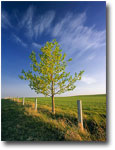
Photo 1
|
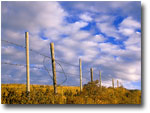
Photo 2
|
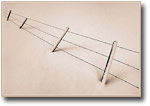
Photo 3
|
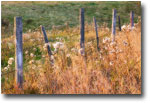
Photo 4
|
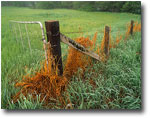
Photo 5
|
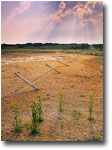
Photo 6
|
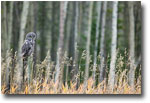
Photo 7
|
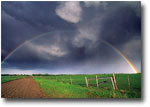
Photo 8
|

Photo 9
|
|
|
Many nature shooters are guilty of elitism. Any photograph showing the ‘hand of man’ does not qualify as ‘nature photography’ in their mind, yet most of their ‘pristine’ nature scenes were all taken at roadside scenic overlooks. They will drive thousands of miles to add another iconic hot spot to their files, yet ignore the tremendous potential that nature offers closer to home. Much like a serious birder, some nature shooters will go to extremes just to add another nature icon to his or her life list. When you look at their photos on the web, there are all the same old spots, from the same old viewpoints...ad infinitum.
Early on in my career as a nature photographer I got sucked into this same trap. I thought that to be a ‘good’ nature shooter, I needed coverage of all the hot spots. Off I went traveling to Yellowstone, Yosemite, Arches, Bryce, Banff, Africa, and Nepal. What I learned is that even if you shoot these places differently than everybody else, your images will still be somewhat predicable and common simply because the subject matter is so well known. And if you are trying to make a living at photography you will be competing with everyone on the planet to get your particular version of Delicate Arch published. So unless you are truly a one-of-a-kind, ‘visionary’ shooter (or an incredible marketing guru); your images will most likely get lost in the shuffle.
It’s also expensive to travel to all these hotspots. That’s OK if you have a good paying job (doctor, lawyer, software developer) and photography is a hobby, but if you are a pro nature shooter, chances are good that you are not affluent and that you will not recoup your expenses if you’re just re-shooting the same stuff that has been shot before by others.
What to do? Well, I don’t have any specific answers except for telling you what works for me. Most of my photography is done close to home, in the immediate neighborhood, of common and ‘mundane’ subjects. For example, I live in cattle country (western Alberta) and everywhere, all around me is barbwire. Fences line the sides of every road and mark off every quarter section. Rather than ignore my surroundings and drive to the nearest national park, I have embraced what I have been given and photograph these fences in the landscape. By doing so I have something to offer the market that few other photographers have in their portfolios.
You’d be surprised how often my photos of barbwire fences sell. These photos are generic enough to be used by all sorts of clients, from the expected cattle industry, to calendars, magazines, and even the advertising industry (“feel fenced in by the constraints of your current internet provider?”). So… if you want fences, Darwin has them! As well he has roads, power lines, road signs, cows, horses, rangeland, and crops. If it is in my neighborhood, I have shot it! By shooting locally I have a much lower overhead and much higher sales than I did when trying to capture the ‘killer iconic’ landscape images in the major national parks. So even if you are not a pro (and never want to be one), the act of learning to make the ‘everyday and mundane’ look beautiful will prepare you well for capturing the more ‘spectacular’ nature locations when you venture further from home.
A note on the photos: this is just a small collection of fence photographs that I have captured recently. Most of these photos (except for photos 4 and 7) were captured using film, mostly Velvia 50. The other two images were made using the Canon EOS-1ds.
DW-NPN 0343
About the author...
Darwin Wiggett and his wife Anita Dammer are the proprietors of Natural Moments Photography. Anita has 17 years experience as staff photographer for the Glenbow Museum in Calgary and is currently doing freelance stock photography and is the editor-in-chief of Photo Life magazine. Darwin has been shooting stock since 1990, and has two books published by Whitecap in Vancouver; Darwin Wiggett Photographs Canada and Seasons in the Rockies. Together they specialize in landscape, nature, animal, humor and kid photography and are represented by various stock agencies worldwide. Their primary stock agent is First Light in Toronto, Canada. You can view more of Darwin's work in his online portfolio.
Comments on NPN creative nature photography articles? Send them to the editor.


| 


